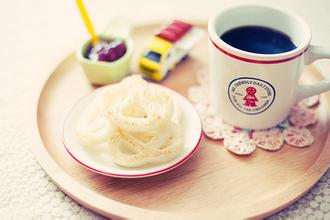Description of Flavor in Coffee Bean processing and washing process introduction of varieties in taste producing areas
Description of Flavor in Coffee Bean processing and washing process introduction of varieties in taste producing areas
1. Choose beans: if you put the harvested fruit in the water tank, the ripe fruit will sink, while the immature and overripe fruit will float up and can be removed.
two。 Drying: place the selected ripe fruits in the square and expose them to the sun for 5 or 6 days until fully dried. At this time, the fruit turns dark brown and the moisture content drops to 13%.
3. Shelling: after drying, the peel becomes fragile and easy to fall off, and can be removed by machine. Farms run by enterprises usually have their own shelling factories, while small farms are processed by processing centers.
4. Selection and grading: exquisite farms identify defective beans manually or by machine, pick them out and throw them away. The manual selection method usually uses a conveyor belt about 1 meter wide. Several female workers sitting on both sides pick out the bad beans visually. On some good farms, they are even selected several times until the defective beans are not seen. The machine selection rule uses computer identification to remove defective beans. Then, there is a grading process in which coffee beans are divided into several quality grades according to established standards, with good coffee entering the selected coffee market and bad coffee flowing into the commercial coffee market.
5. Polishing: the exocarp and endocarp can only be removed by shelling. At this time, the silver film is still wrapped in the outer layer of the seed, and the film has to be ground off by machine. Then, pack the coffee beans into a bag of 60 kilograms, which can be sold at a price. The weight of bags varies slightly from region to region, most of which are packed in sacks of 60 kg, while Jamaican Blue Mountain Coffee is packed in wooden barrels, with both 30 kg and 70 kg.
Washing method:
1. Select beans:
Put the harvested fruit in a water tank and soak for about 24 hours. At this time, ripe fruit will sink, while immature and overripe fruit will float up and can be removed.
2. Remove the pulp:
Use a machine to remove the peel and pulp, leaving only coffee beans wrapped in endocarp. At this time, there is a layer of mucous membrane on the outside of the beans, and the process of washing is to wash this layer of mucous membrane.

Important Notice :
前街咖啡 FrontStreet Coffee has moved to new addredd:
FrontStreet Coffee Address: 315,Donghua East Road,GuangZhou
Tel:020 38364473
- Prev

Introduction to the production area of coffee bean by washing in the sun with yellow honey red honey black honey
Coffee beans Yellow Honey Red Honey Black Honey Sun Water washing production area introduced coffee for drinking, which is said to have been recorded in ancient Arabic documents since the beginning of the eleventh century. Before that, raw coffee beans were dried and fried in the Arab region as stomach medicine, but it was later learned that coffee also had a refreshing effect, coupled with strict Muslim commandments, forbidding believers to drink alcohol.
- Next

Coffee bean rough grinding suitable for brewing utensils: (), flannel dripping filter pot.
Coffee bean rough grinding suitable for brewing utensils: (), flannel dripping filter pot. Each extraction apparatus has its own appropriate degree of grinding, so grinding is not the degree of grinding you want. As I just said, when extracting coffee with filter paper trickling filtration, the coffee powder is too coarse or too fine, which means that the most suitable grinding degree is medium to medium roughness.
Related
- Guji coffee producing area of Guji, Ethiopia: Humbela, Shakiso, Wulaga
- What is the most expensive variety of Qiloso in BOP multi-variety group?
- How to store the coffee beans bought home?
- Why are Yemeni coffee beans so rare now?
- Ethiopian Sidamo all Red Fruit Sun Sun Santa Vini Coffee beans
- SOE is mostly sour? What does it mean? Is it a single bean? what's the difference between it and Italian blending?
- Is Italian coffee beans suitable for making hand-brewed coffee?
- How to choose coffee beans when making cold coffee? What kind of coffee beans are suitable for making cold coffee?
- Just entered the pit to make coffee, what kind of coffee beans should be chosen?
- Can only Japan buy real Blue Mountain Coffee? What are authentic Jamaican Blue Mountain coffee beans?

